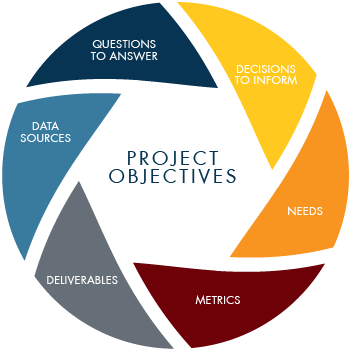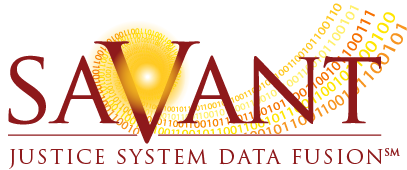Determine Project Feasibility
A project might be highly desirable, but it may not always be feasible. This stage of the project is focused on exploring whether the data needed to complete the project are collected, accessible, and usable.
Are the data collected?
We start by completing a comprehensive review of the justice system software applications which are believed to hold the data elements required to generate the desired metrics. This includes a review of available documentation of the data contained in source systems and data warehouses, as well as front-end/back-end software and database documentation. Once all available documentation is reviewed, our team works with the respective ‘data stewards’ to ensure proper understanding and interpretation of the data in relation to the business process and data entry practices. A data steward supports the system user community and is responsible for ensuring the quality and fitness of the data for its intended use.
Are the data accessible?
Next, we assess whether the data are accessible. Data accessibility is measured in two primary ways – authorization and technical access. We first determine if the ‘data owner’ of the data will provide access. Data owners are legally responsible and accountable for who has access to the data. Authorization to access the data requires a formal agreement that describes the data that will be accessed, the duration of access, restrictions on use, and so forth. We work with the owner of each data source to be granted access through discussion, negotiation, and ultimately consent. Once consent is granted, we establish a method for securely accessing and/or extracting the data. This task requires extensive communication with the ‘data custodian’. Data custodians manage the technical environment where data resides and are responsible for ensuring safe custody, transport, and storage of data.
Are the data usable?
Finally, we ascertain if the data are usable. Data are considered usable when the needed data elements exist, element values are complete, values are standardized when appropriate, and they can be linked together. We determine if the needed data elements exist in the available source data or data warehouse and create documentation including data maps for each metric. Each data map includes the data source and elements needed to generate the metric and the linking strategies within each data source. We then rely on the documentation to request and receive a data sample, which is analyzed to determine if the element values are complete, the values are standardized when appropriate, the primary and foreign keys link the data successfully, and the data can be processed.
When it is confirmed that the data needed are collected, accessible, and usable, the project is deemed feasible and moves to the next stage.




